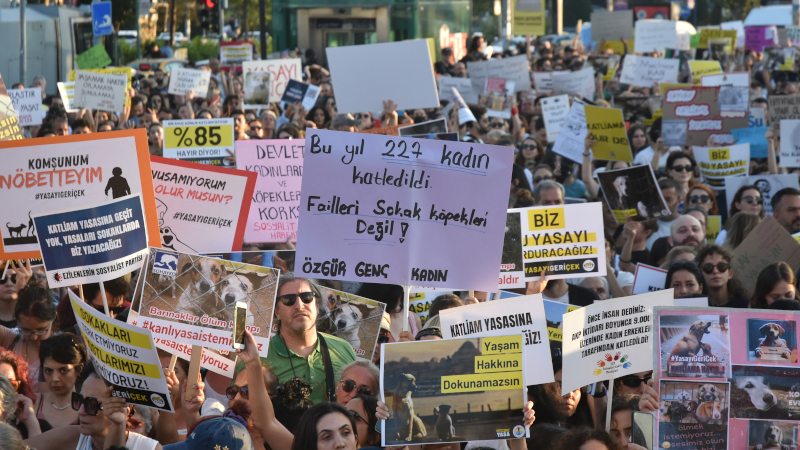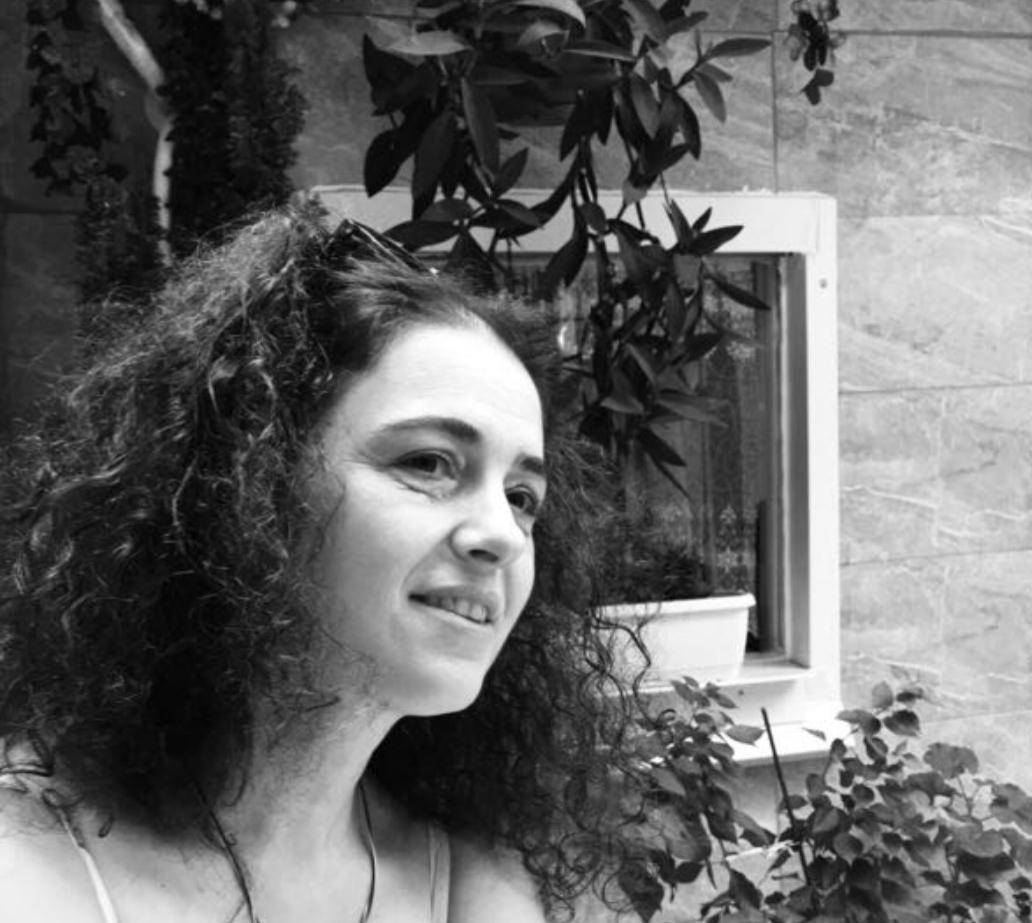As soon as the government's debate on “euthanasia” of stray animals, an irrational concept for this issue, became law and was published in the Official Gazette, news of massacres started coming from all over Turkey. The images of dogs and cats tortured to death are blood-curdling. Even more frightening is the social consent behind these scenes and what they may lead to over time. We talked about the subject with psychiatrist and psychoanalyst, Specialist Dr. Didem Aksüt, because we need it.
We are a civilization that exploits animals in various ways, but this latest move should be put in a different context. To put it in the most direct way, what is the effect on public mental health of ending the life of another living being so easily and with such torture methods as we have seen?
I think this will undermine the sense of justice and security the most. Anatolian people, including Istanbul, have been living a very entangled and intertwined life with cats and dogs for centuries. And they have benefited from this in some critical periods. Because Europe slaughtered not only wise women but also cats during the witch hunts, it lost a significant part of its population in many plague epidemics, the biggest ones in the 1300s and 1600s. In the Ottoman Empire, these epidemics did not have devastating consequences as in Europe, because cats regularly limited the population of flea-infested mice carrying Yersinia Pestis. Seeing the wanton murder of living creatures that we know are on the street, that we greet as we pass by, that we watch as they grow up from infancy, and that are our neighbors even if they do not have a roof over their heads, will of course disrupt our spiritual chemistry. This attitude, which creates the feeling that common sense has been corrupted, that life is not respected, will create a sense of uncanny that one day, for some reason, we may be taken away like them. It will suppress our life drive (libido) and inflame our death drive. However, we need our libido for creativity, to produce something new, to love, even I don't like the word progress, but I use it because it is a meaningful concept for many people, to advance economically, to increase social welfare. It is very difficult to live in a society with a strong death drive.
What kind of psychological fracture does the consent of a section of society to this administrative practice create? For those who object to this situation, this is such an unacceptable, horrifying consent that how can the feeling of living together be sustained?
There is a defense mechanism called split. It means separating good and evil from each other so that there is not a single piece of the other on either side. It is an archaic mechanism. So people who have had a relatively good childhood, who have grown up in a good enough environment, use it less than those who haven't had that chance. But even people who are mentally healthier resort to splitting when they have traumatic experiences and the outside world becomes uncanny. It means “rive”. We usually translate it as “dividing”. The most common defense mechanism we have witnessed being used in Turkey for a very long time is the split: “Anyone who is not me is bad and does not bear anything similar to me”. Although it is quite costly in terms of spiritual economy, , like throwing away the whole fruit when one side is rotten, it is indispensable for people who do not have the ability to use better structured defense mechanisms. Knowing that our “fragile but resilient” comrades will be taken from among us and murdered will increase the split. It will drive people apart. It will feed hatred. Hate is also one of the ways in which the death drive manifests itself.
What consequences can witnessing these scenes and seeing their possibility lead to people prone to violence? How does it foster violent tendencies towards children, women, other people and animals?
I think this law offers a unique opportunity for antisocial (sociopathic) people. This is a type of personality disorder in which the conscience apparatus is underdeveloped but the superego can be quite rigid. When he/she is sure that he/she will not be punished, his/her capacity to do “evil” is quite high. This also applies to people with sadistic tendencies. Evil is actually an ethical, philosophical or religious concept. But in recent years we, as psychoanalysts all over the world, have been thinking about evil. A psychiatrist named Michael Stone schematized the projection of evil in psychiatry as follows; imagine a Venn diagram. He placed evil at the intersection of four circles. Each circle describes the following mental pathologies; Antisocial Personality, Psychopathology, Schizoid Personality, Sadistic Personality. There is a wonderful movie by Kieślowski called “A Short Film on Killing”. In the movie, a lawyer candidate taking the bar exam answers a question like this: Punishment is not given to the perpetrator, but rather to intimidate and deter society from committing crimes. When harming a living creature is not a crime, who can hold those who want to do evil?
In this process, a halo of hatred quickly developed against people who love, feed and care for dogs. We hear about physical and psychological violence against them. How does the feeling of hatred move forward by contaminating, by leaping, by creating new target subjects?
That's the split I was just talking about. It's a very troublesome situation. You need a safe environment to deal with it, but it's very difficult to provide that feeling in these circumstances. What's promising is that the people who love animals, or at least think it's wrong to kill them, outnumber the people who want to eradicate them. I think this society really loves cats and dogs, regardless of their sociocultural level.
There are those who explain it in this way, how can the fear of dogs or animals in general be justified, what is at its source? What is the way to help individuals overcome this fear?
Behavioral therapies can be useful for phobic fears. There the feared object has more of a symbolic meaning. Roughly speaking, someone who is afraid of spiders is actually afraid of death. But I think that milder fears are actually caused by not knowing enough or having a traumatic experience in the past. There used to be a giant-sized dog living at the entrance of the building where I used to work. It was quite old and the apple of the neighborhood's eye. Most of the time you had to jump over it to get into the building, some of my patients were afraid of the dog but they started to love it when they came and went for sessions. As long as I worked there, all my patients who were afraid of dogs went a long way to overcome their fear. In the Shafi'i sect, a dog is considered unclean. So I think they stay away from dogs as much as possible from childhood, they are afraid of them. Without an acquaintance, petting is not possible and the fear grows exponentially. I think trying to pet a calm, small dog, if possible with someone they trust, first from a distance and then gradually getting closer, can help the fear to disappear quickly.
As mental health professionals, how do you interpret this law and what do you recommend considering your professional responsibility?
Being a passive spectator of crime is also a kind of crime. If I am not mistaken, Hanna Arendt says this. Being in a passive position actually increases anxiety. If you can do something to prevent crime, you can feel safer. It is always good to invest in life and not in death. Making a small noise can increase our confidence in what is right and just. Split must be avoided at all costs. Every sentence we start with “them” and “us” has lost the possibility of a solution from the beginning. As much as possible, I think we should adopt an approach like “I feel this way and that way, and I'm sure you have this feeling somewhere inside you”.





